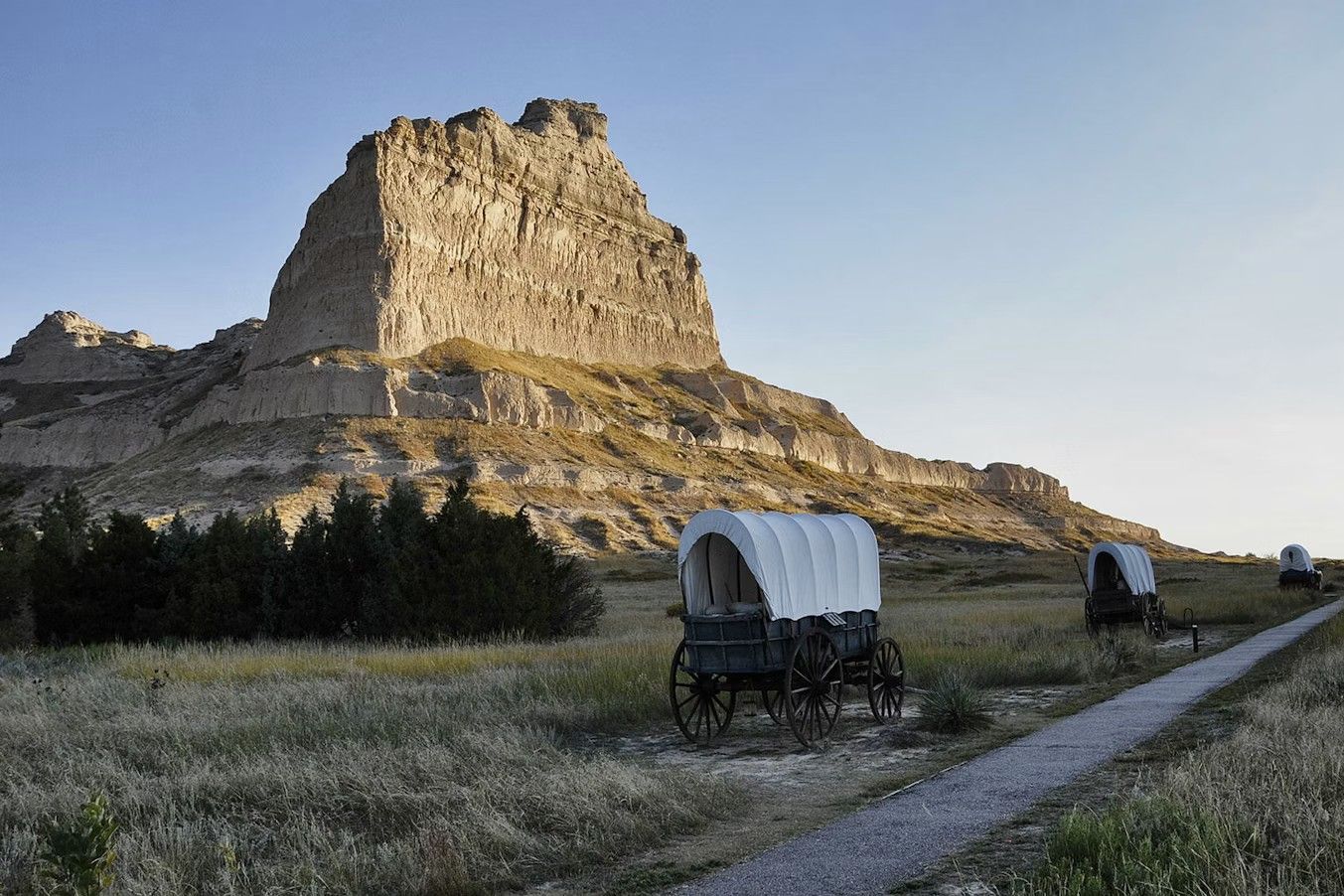Hidden Trading Routes Of Scotts Bluff In Nebraska

Ever wondered about the hidden trading routes of Scotts Bluff in Nebraska? This historic landmark holds secrets of ancient paths used by Native Americans, fur traders, and pioneers. These routes were vital for commerce and survival, weaving through rugged landscapes and offering breathtaking views. Imagine walking the same trails that once bustled with activity, connecting distant communities. Scotts Bluff isn't just a scenic spot; it's a window into the past, revealing stories of adventure, trade, and resilience. Whether you're a history buff or a nature lover, exploring these routes offers a unique glimpse into America's rich heritage.
Hidden Trading Routes of Scotts Bluff in Nebraska
Scotts Bluff, Nebraska, holds a treasure trove of hidden trading routes that once buzzed with activity. These paths, etched into the landscape, tell stories of traders, pioneers, and Native Americans who traversed them. Let's uncover some of these fascinating routes.
Oregon Trail
The Oregon Trail stands as one of the most iconic trading routes in American history. This path, stretching over 2,000 miles, saw countless wagons and settlers heading west in search of new opportunities.
Mitchell Pass: A crucial point on the Oregon Trail, Mitchell Pass allowed travelers to navigate through the rugged terrain of Scotts Bluff. The pass provided a relatively easier route through the bluffs, making it a popular choice for many.
Robidoux Pass: Before Mitchell Pass became the preferred route, Robidoux Pass was the main gateway through Scotts Bluff. Named after the Robidoux family of traders, this pass was vital for early pioneers.
Mormon Trail
Parallel to the Oregon Trail, the Mormon Trail was another significant route. This path was primarily used by members of The Church of Jesus Christ of Latter-day Saints as they journeyed to Utah.
South Bluff: South Bluff offered a vantage point for travelers on the Mormon Trail. From here, they could survey the surrounding area and plan their next steps.
North Bluff: North Bluff provided a similar advantage, with its elevated position giving travelers a clear view of the landscape ahead. This was particularly useful for navigating the challenging terrain.
Pony Express Route
The Pony Express, though short-lived, played a crucial role in the communication network of the United States. Riders on horseback would relay messages across vast distances, including through Scotts Bluff.
Horse Creek Station: One of the many relay stations along the Pony Express route, Horse Creek Station was a vital stop for riders to rest and exchange horses. Its location near Scotts Bluff made it an essential part of the network.
Mud Springs Station: Another important relay station, Mud Springs Station, provided a much-needed respite for Pony Express riders. The station's proximity to Scotts Bluff ensured that messages could be relayed quickly and efficiently.
Native American Trade Routes
Long before the arrival of European settlers, Native American tribes had established their own trading routes through Scotts Bluff. These paths facilitated the exchange of goods, ideas, and culture.
Platte River Path: The Platte River Path was a major trade route for Native American tribes. Following the course of the Platte River, this path connected various tribes and allowed for the exchange of goods such as furs, food, and tools.
Buffalo Trail: The Buffalo Trail was another significant route, used primarily for hunting and trading buffalo. This path not only provided sustenance but also facilitated trade between different tribes.
California Trail
The California Trail, like the Oregon Trail, was a major route for settlers heading west. This path saw a significant influx of travelers during the California Gold Rush.
Scotts Spring: Scotts Spring was a crucial water source for travelers on the California Trail. Located near Scotts Bluff, this spring provided much-needed refreshment for both people and animals.
Independence Rock: Though not directly in Scotts Bluff, Independence Rock was a key landmark on the California Trail. Travelers would often carve their names into the rock, leaving a lasting mark of their journey.
Hidden Trading Routes of Scotts Bluff in Nebraska
Scotts Bluff in Nebraska offers a glimpse into the past with its hidden trading routes. These paths, once bustling with traders and pioneers, now serve as a reminder of the area's rich history. Exploring these routes provides a unique way to connect with the stories of those who traveled them long ago. The scenic views and historical landmarks make it a must-visit for history buffs and nature lovers alike. Whether hiking the trails or visiting the museum, there's something for everyone. Plan a trip to Scotts Bluff to experience the hidden trading routes and uncover the tales they hold. This journey through history will leave you with a deeper appreciation for the pioneers' resilience and the natural beauty of Nebraska. Don't miss out on this opportunity to step back in time and explore one of the state's most intriguing historical sites.

